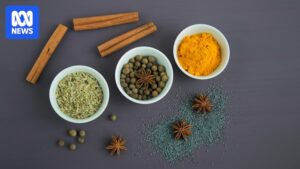
Giant loops of DNA, recently discovered in the bacteria residing in our mouths, may play a crucial role in enhancing oral health and bolstering our immune systems, potentially lowering the risk of certain cancers. These DNA loops, named ‘Inocles’, are a large type of plasmid—genetic elements that exist outside the primary DNA structure in many microbes.
The discovery, led by researchers from the University of Tokyo, suggests that Inocles could be vital in helping Streptococcus bacteria adapt to the biological environment of the mouth, functioning like supplementary survival kits. This groundbreaking finding adds a new dimension to our understanding of the oral microbiome.
Unveiling the Mystery of Inocles
Dr. Yuya Kiguchi, a microbiologist at the University of Tokyo, explains the significance of this discovery. “We know there are a lot of different kinds of bacteria in the oral microbiome, but many of their functions and means of carrying out those functions are still unknown,” he states. “By exploring this, we discovered Inocles, an example of extrachromosomal DNA—chunks of DNA that exist in cells, in this case, bacteria, but outside their main DNA.”
The research involved a meticulous study of saliva samples from 56 volunteers, followed by tests on 476 additional samples to gauge the prevalence of Inocles in the general population. The data reveals that approximately three-quarters of people could be carrying these genetic elements.
The Challenge of Size and Sequencing
Ironically, the reason Inocles had remained undetected until now could be attributed to their extraordinary size. Conventional DNA sequencing techniques involve fragmenting DNA into smaller pieces, which, while easier to analyze, complicates the reconstruction of larger sequences. To overcome this challenge, the researchers developed a specialized sequencing system called preNuc, which filters out human DNA from samples, thus simplifying the analysis of bacterial DNA.
“The average genome size of an Inocle is 350 kilobase pairs, a measure of length for genetic sequences, making it one of the largest extrachromosomal genetic elements in the human microbiome,” Kiguchi notes. “Plasmids, other forms of extrachromosomal DNA, are at most a few tens of kilobase pairs.”
“This long length endows Inocles with genes for various functions, including resistance to oxidative stress, DNA damage repair, and cell wall-related genes, possibly involved in adapting to extracellular stress response,” Kiguchi explains.
Potential Implications for Cancer Prevention
Interestingly, the study found that individuals with head and neck cancer had significantly fewer of these DNA elements in their mouths, suggesting a potential protective role played by Inocles. However, whether Inocles actively protect against cancer or if another factor reduces their numbers while increasing cancer risk remains unclear.
The researchers are eager to further explore the functions of the genes within Inocles, their potential for transmission between individuals, and their overall impact on oral health. “It’s like finding a book with extra footnotes stapled to it, and we’re just starting to read them to find out what they do,” Kiguchi adds.
Looking Ahead
This discovery opens new avenues for research into the human microbiome, particularly the oral microbiome’s role in health and disease. Understanding how Inocles function could revolutionize preventive strategies against oral and systemic diseases, including cancer.
As the scientific community delves deeper into the mysteries of Inocles, this discovery could mark the beginning of a new era in microbiome research, potentially leading to novel therapeutic approaches and a better understanding of the complex interactions within our bodies.





